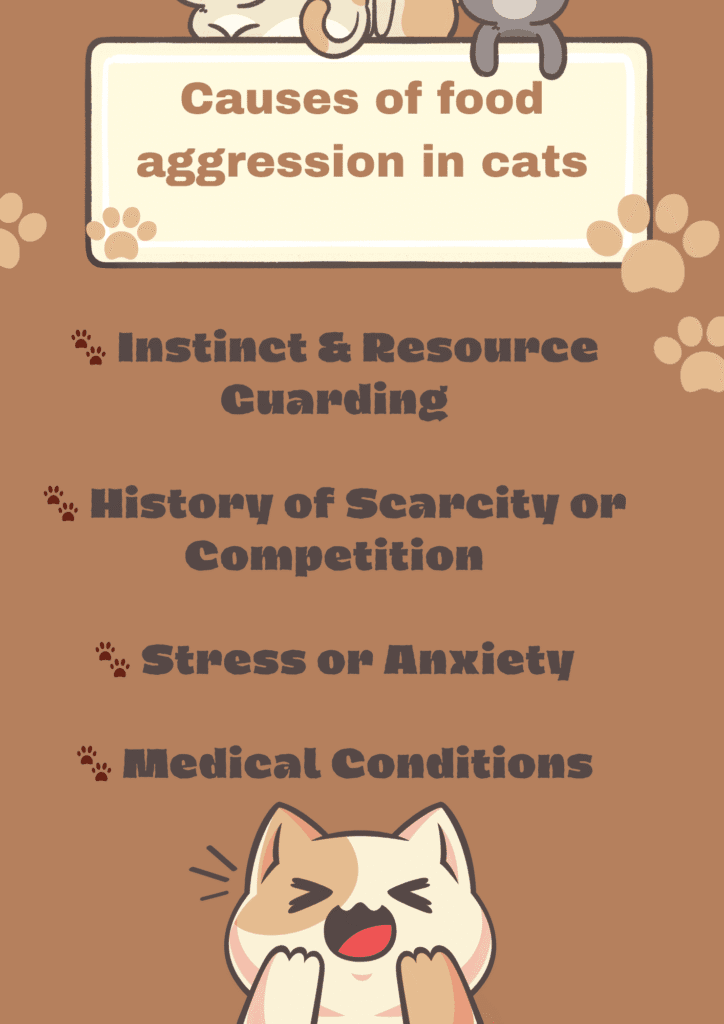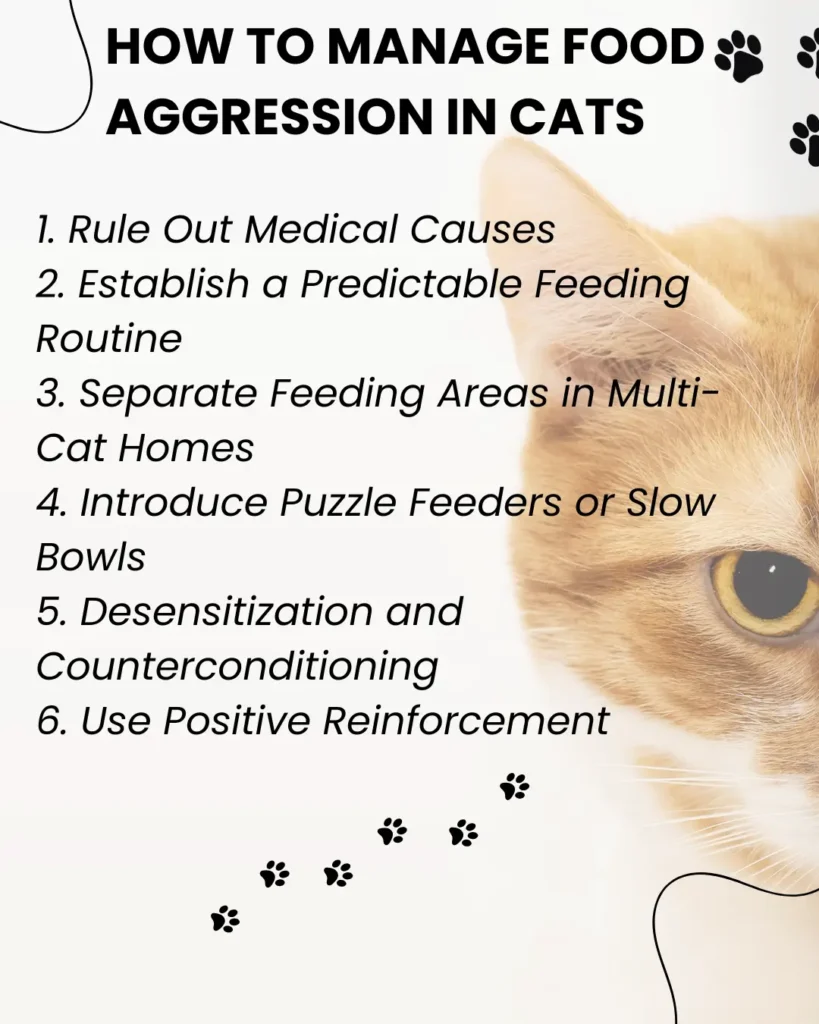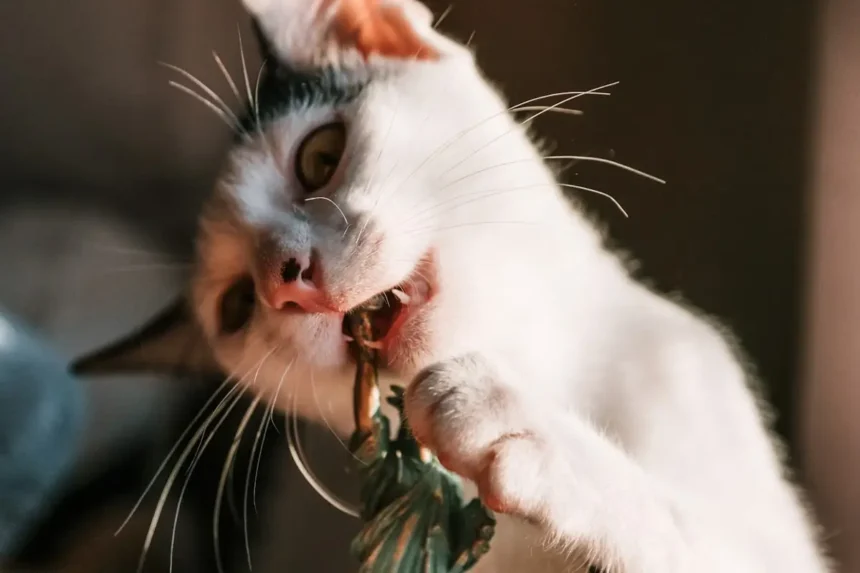Food aggression in cats involves defensive or hostile behavior during feeding time. This can manifest as growling, swatting, fast eating, bowl guarding, or tense posturing. While concerning, this behavior is usually rooted in instincts, stress, or prior negative experiences.
🔍 What Is Food Aggression in Cats?
Food aggression is a form of resource guarding. It may look like: – Growling or hissing when approached near food – Lunging or swatting at humans or other cats – Eating rapidly or blocking access to the food bowl – Ears back, tail twitching, body low or stiff
🔍 Why Does Food Aggression Happen?

🐾 Instinct & Resource Guarding
Even well-fed domestic cats retain hunting instincts and may protect food out of habit.
🐾 History of Scarcity or Competition
Cats who grew up in shelters or feral environments may have learned to guard food to survive.
🐾 Stress or Anxiety
Changes like moving, new pets, or inconsistent feeding times can trigger defensive eating.
🐾 Medical Conditions
Conditions like dental disease, gastrointestinal pain, or hyperthyroidism can increase irritability during meals.
✅ How to Manage Food Aggression in Cats

1. Rule Out Medical Causes
Visit a vet to check for dental issues, metabolic conditions, or other sources of discomfort.
2. Establish a Predictable Feeding Routine
Feed small, frequent meals at consistent times to reduce food-related anxiety.
3. Separate Feeding Areas in Multi-Cat Homes
Use different rooms or visual barriers to give each cat privacy while eating.
4. Introduce Puzzle Feeders or Slow Bowls
Encourage natural foraging behavior, reduce boredom, and slow down rapid eaters.
5. Desensitization and Counterconditioning
Start by standing nearby while your cat eats and reward relaxed behavior. Gradually get closer with calm reinforcement.
6. Use Positive Reinforcement
Reward patient, calm eating with treats or play. Never punish aggression—it increases fear.
7. Reduce Stress Through Play and Enrichment
Interactive toys, vertical spaces, and mental stimulation can reduce food preoccupation and overall stress.
🧩 Quick Reference Table
| Behavior / Trigger | Recommended Action |
|---|---|
| Eating too fast / anxiety | Puzzle feeders, scheduled small meals |
| Growling / guarding | Separate meals, reward calm behavior |
| Competition with other cats | Feed separately, monitor & arrange stations |
| Stressful home environment | Desensitization training, calm routines |
| Possible medical issue | Veterinary evaluation |
❓ FAQs About Food Aggression in Cats
Can only some cats show food aggression in multi-cat homes?
Yes. Not all cats react the same way—dominance or anxiety can cause one cat to guard food while others remain relaxed.
Should I punish food aggression to stop it?
No. Punishment worsens aggression. Focus on creating a secure environment and reinforcing calm behavior.
Can food aggression be completely cured?
With consistency and patience, many cats improve. Some may need lifelong management; severe cases may benefit from a feline behaviorist.
Is food aggression reversible if it stems from past trauma?
Yes. Trust-building, gradual exposure, and positive reinforcement are key tools to help traumatized cats feel safe again.
🐱 Final Thoughts
Food aggression in cats usually stems from fear, not malice. By understanding your cat’s needs—medical, emotional, and environmental—you can restore harmony at mealtimes. If progress stalls, a behaviorist can guide a structured recovery plan.
➡️ Follow @PawBlooms for more empathetic feline wellness tips, and share this guide with fellow cat parents!

